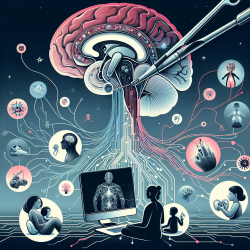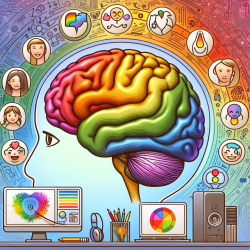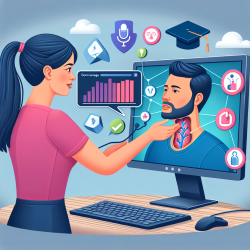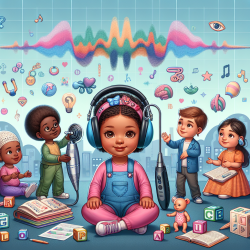Introduction
In the ever-evolving field of neurosurgery, the integration of cutting-edge technologies like brain-computer interfaces (BCIs) offers promising avenues for enhancing therapeutic outcomes. The research article "The Brain and Computer: The Neurosurgical Interface" by Pouratian (2011) delves into the potential of BCIs to transform neurological interventions. For practitioners working with children, understanding and implementing these advancements can lead to significant improvements in quality of life and functional capabilities.
The Promise of Brain-Computer Interfaces
BCIs represent a revolutionary approach to interacting with the brain, allowing for the modulation of central nervous system activity at various levels, from molecular to network. This technology is particularly relevant for addressing neurological impairments in children, such as those resulting from stroke, spinal cord injuries, or neurodegenerative diseases.
The integration of advanced sensor technologies, real-time signal analysis, and sophisticated effector technologies positions BCIs as a powerful tool in the therapeutic arsenal. By harnessing these innovations, practitioners can offer interventions that not only target structural pathologies but also improve functional outcomes.
Implications for Practitioners
For practitioners, particularly those involved in online therapy services like TinyEYE, the implications of BCI advancements are profound:
- Enhanced Intervention Strategies: BCIs can facilitate more personalized and effective therapy plans by providing real-time insights into brain activity and response.
- Improved Quality of Life: By enabling more precise modulation of neurological functions, BCIs can significantly enhance the quality of life for children with neurological impairments.
- Collaborative Opportunities: The development and implementation of BCIs require multidisciplinary collaboration, offering practitioners the chance to work alongside neurosurgeons, engineers, and scientists.
Challenges and Considerations
While the potential of BCIs is immense, practitioners must also navigate certain challenges:
- Ethical and Practical Concerns: The invasive nature of some BCI technologies necessitates careful ethical considerations, especially when working with children.
- Technological Limitations: The current state of BCI technology requires further refinement to ensure reliability and practicality in clinical settings.
- Training and Adaptation: Practitioners must be equipped with the necessary training to effectively integrate BCI technologies into their therapeutic practices.
Encouraging Further Research
To fully realize the potential of BCIs, continued research and development are crucial. Practitioners are encouraged to stay informed about the latest advancements and consider participating in collaborative research efforts. By doing so, they can contribute to the refinement of BCI technologies and the enhancement of therapeutic outcomes for children.
Conclusion
The integration of brain-computer interfaces into neurosurgical practice offers a transformative opportunity for improving therapeutic outcomes in children. By embracing these advancements, practitioners can play a pivotal role in enhancing quality of life and functional capabilities. For those interested in exploring this topic further, I highly recommend reading the original research paper, The Brain and Computer: The Neurosurgical Interface.










